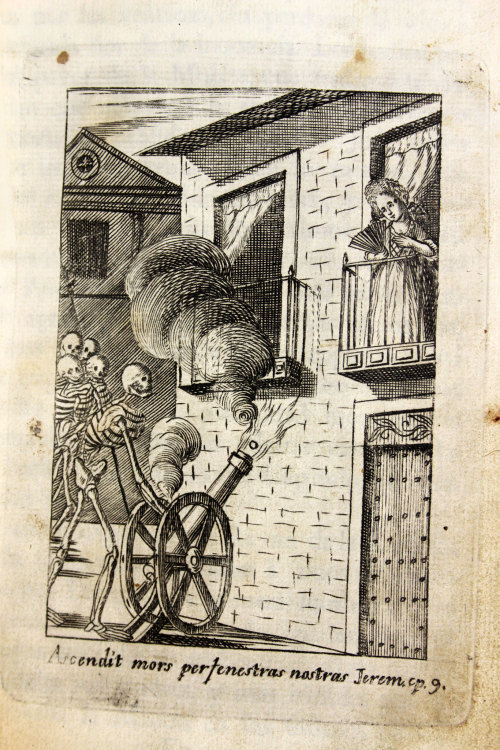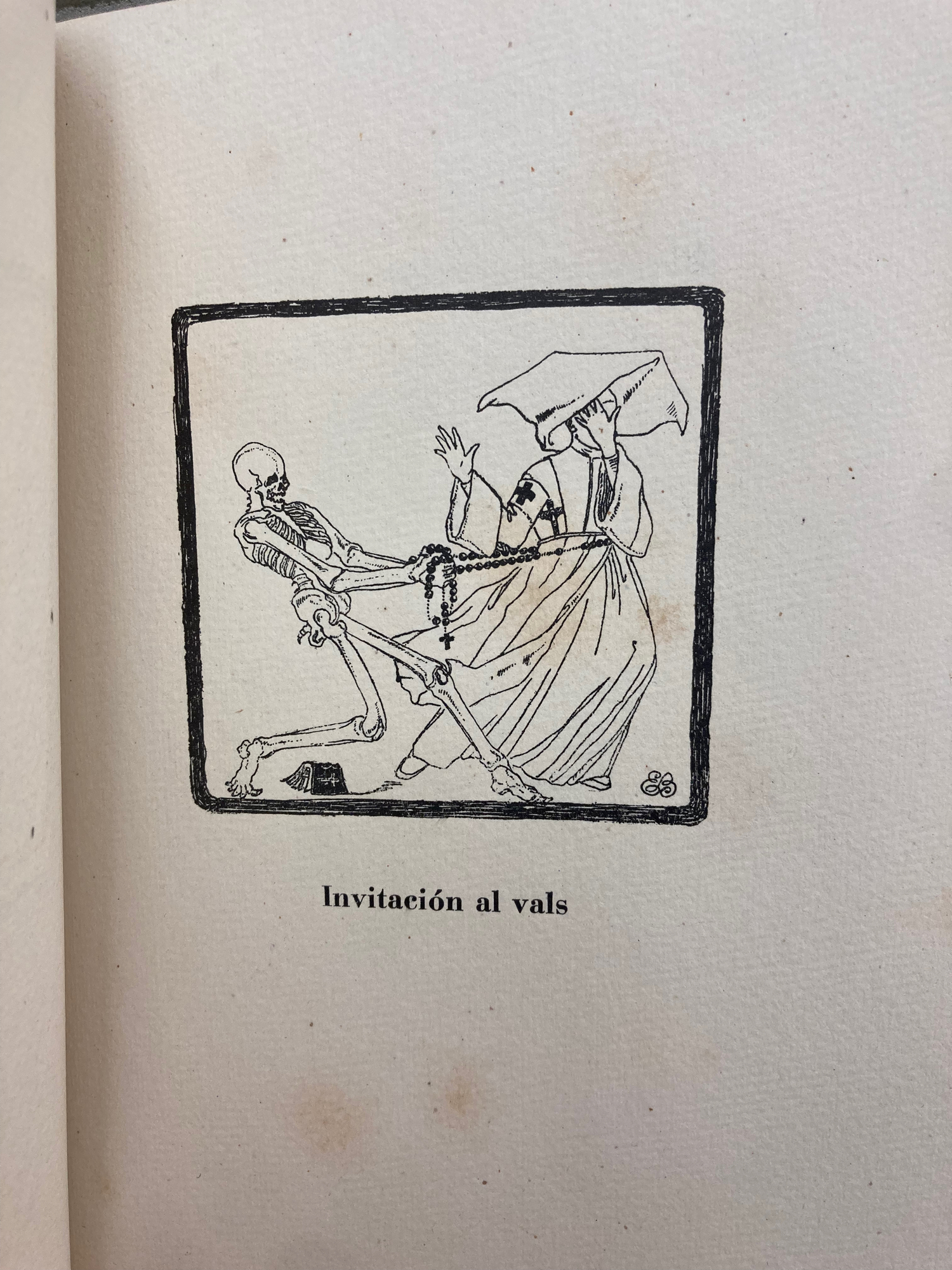No Bones About It: An exhibit of spooky skeletons
Libros sobre Huesos
The Spanish-language books in this exhibit both use personifications of death as a starting point for interesting literary experiments. Bolaños creates a kind of strange biography of Death whereas Bulbena Estrany uses the the dance of death as a way to talk about 20th-century European conflict and politics. Both writers play with the form to develop a way for the reader to think about the world around them and its relationship with death.
La portentosa vida de la Muerte: emperatriz de los sepulcros, vengadora de los agravios del Altisimo, y muy señora de la humana naturaleza.
Joaquín Bolaños (1711-1796)
PQ7296 .B7 P67 1792
The Franciscan friar Joaquín Bolaños wrote this proto-novel that stars Death as a female protagonist (after all, la muerte in Spanish is a feminine noun). The story begins in the Garden of Eden, where Death is born as a result of the sin of Adam and Eve. Over the course of the book, Death grows up, goes on adventures, gets married several times (and kills all her husbands, of course), and is finally herself conquered on the Judgment Day. The book was not well-received in its own day — it was considered irreverent and morbid — is now seen as an important representation of 18th-century Mexican culture.
La gran danza macabra: caprichos inspirados en las grandes guerrars mundiales.
Evelio Bulbena Estrany (1888-1960)
PQ6603 .U5 G7 1947
The Catalan artist and art critic Evelio Bulbena Estrany unusually organizes his Dance of the Dead chronologically, telling the story of 20th-century conflict in Europe with little vignettes of what Death is up to at any given time.

